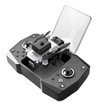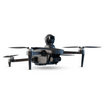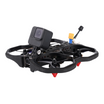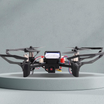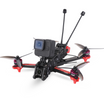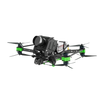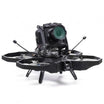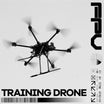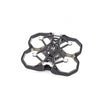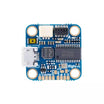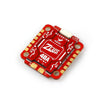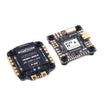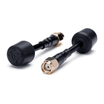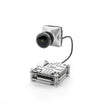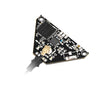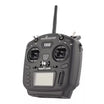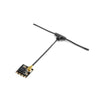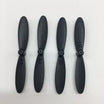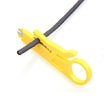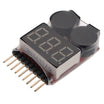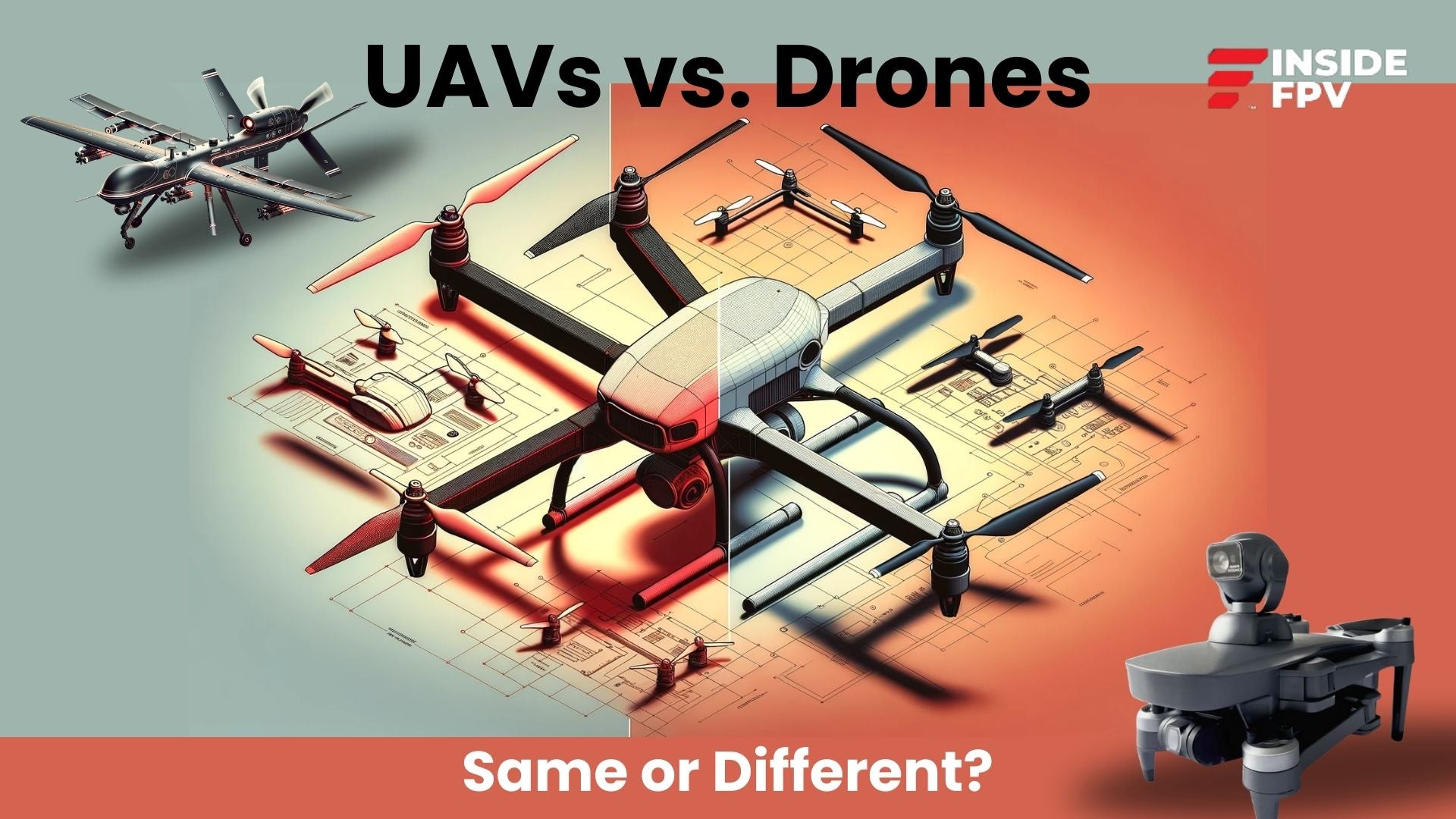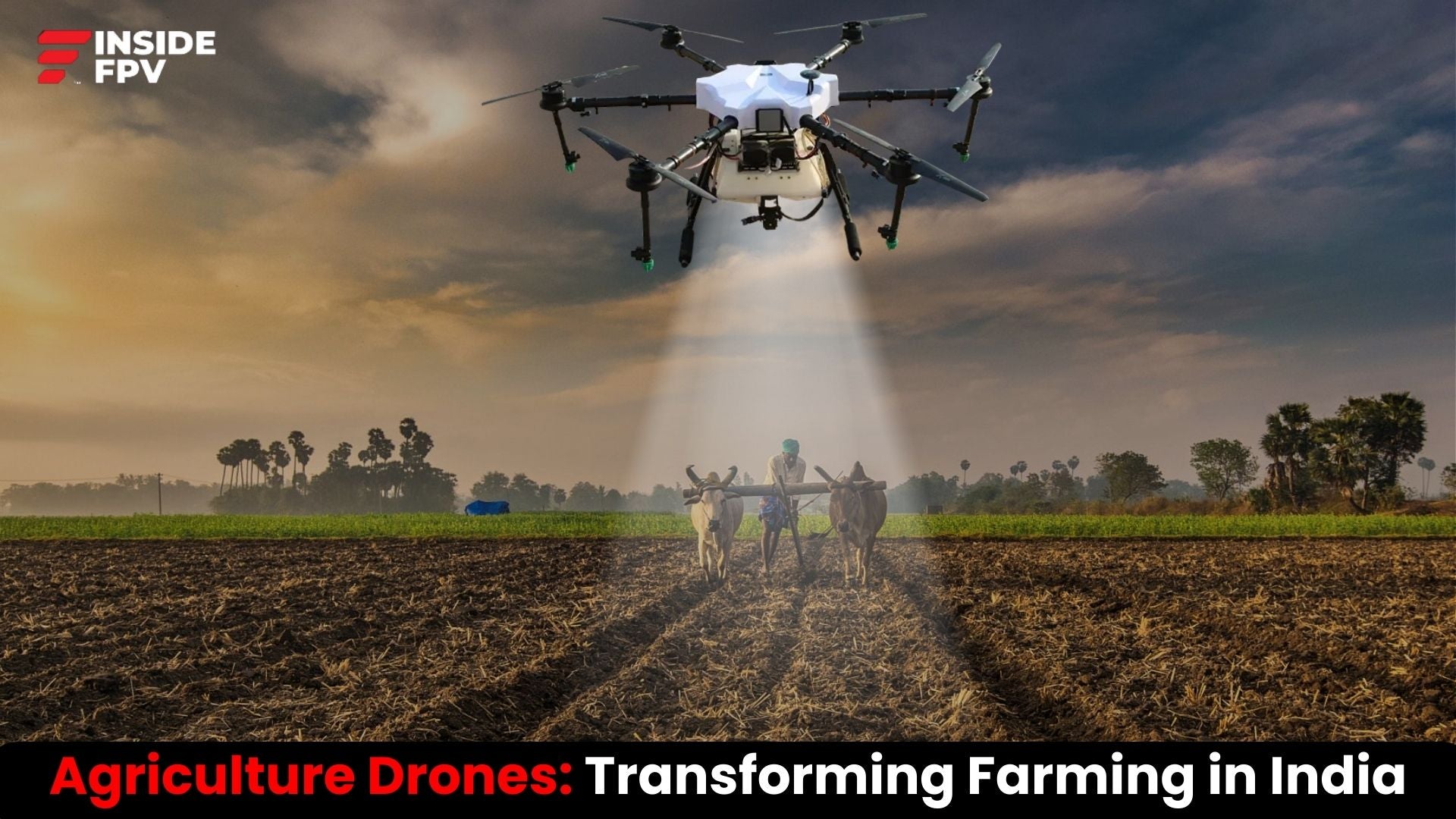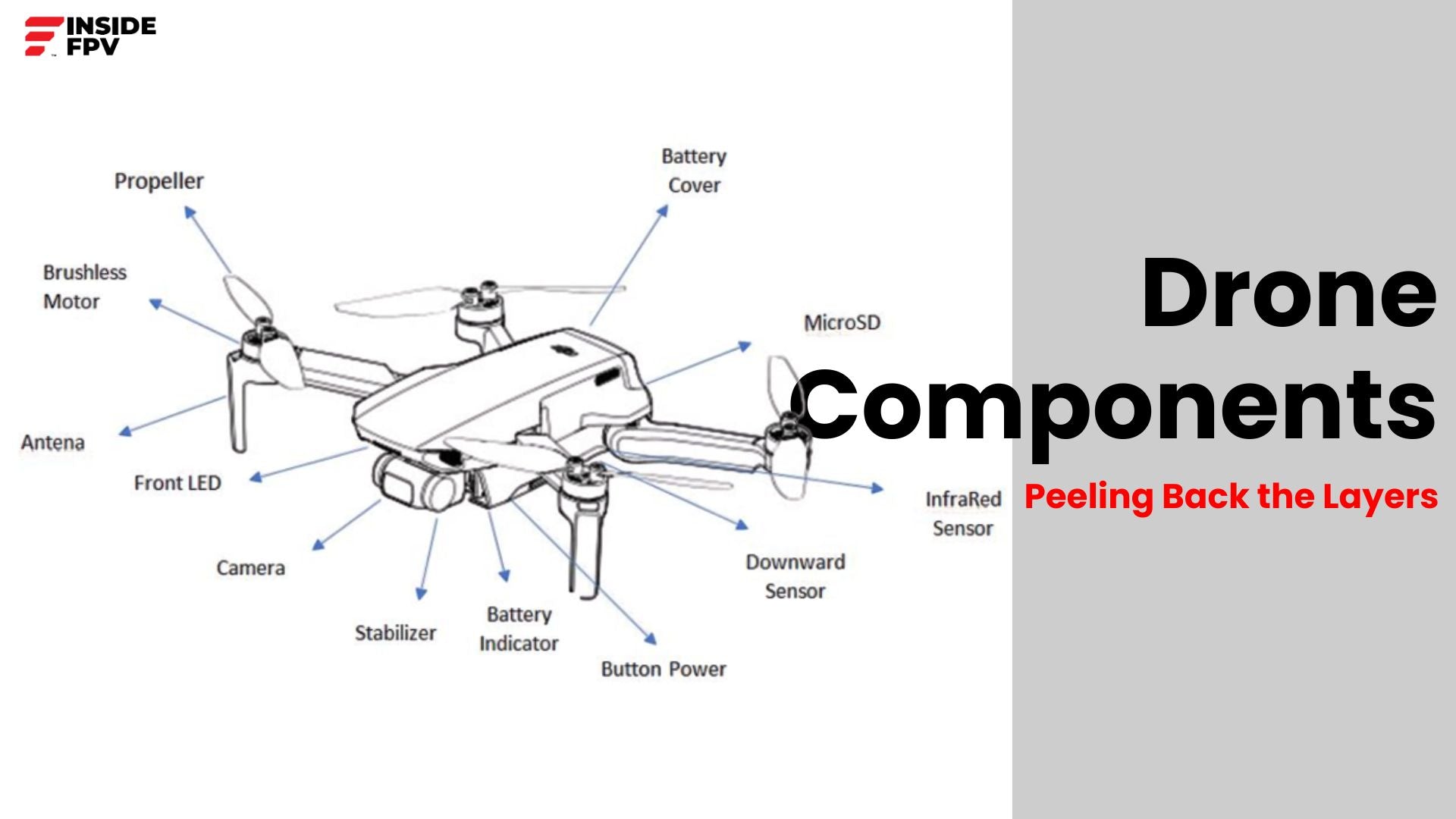Unmanned Aerial Vehicles (UAVs) and drones are often used interchangeably, but there are some key differences between the two terms that are important to understand. In this blog post, we’ll break down the terminology around drones and UAVs, look at how the terms overlap and differ, and help decipher exactly what sets both aerial vehicles apart.
A Brief History of Drones and UAVs
The concept of an “unmanned aerial vehicle” first emerged in the early 1900s, when remotely operated biplanes were used for target practice. These early versions of UAVs were quite primitive, but established the possibility of aircraft that could fly without an onboard human pilot.
Over the next hundred years, UAVs and their capabilities advanced considerably, especially with military investment during wartime. During the Vietnam War, UAVs were used mainly for surveillance purposes. By the 90s, UAVs evolved into combat drones equipped with missiles and bombs. The most well-known modern military UAV is likely the Predator drone, which has been operational since 1995.
On the civilian side, non-military UAV adoption kicked off around 2006, when the Federal Aviation Administration (FAA) issued their first commercial drone permits. Early civilian UAV uses included aerial surveillance, photography, and filmmaking. Hobbyist drone adoption then accelerated rapidly thanks to the release of affordable “prosumer” drones from DJI in 2013.
Today, UAVs have evolved far beyond their 20th century predecessors. Modern drones now leverage cutting-edge technologies like LiDAR sensors, computer vision, thermal imaging payloads and more. The terms “UAV” and “drone” have become common vernacular, though their definitions have become muddied.
Breaking Down Key Terminology
- UAVs
“UAV” stands for “unmanned aerial vehicle” – any aircraft that does not have a human pilot onboard. Instead, UAVs are controlled remotely by a pilot on the ground, or increasingly, through sophisticated programming and autonomy.
Under the umbrella of “UAV” lives a number of more specific subcategories:
UAS: Stands for “unmanned aircraft system”. Refers to the UAV itself plus associated support equipment, communications links and personnel involved in operating the vehicle.
RUAV: “Remotely-operated UAV”. Indicates a UAV controlled in real-time by a remote human pilot, via radio, WiFi link, etc. RUAVs do not have fully autonomous capabilities.
AUVSI: The Association for Unmanned Vehicle Systems International, which publishes specifications and guides for the civilian UAV industry.
So a UAV describes the aircraft itself, while UAS refers to the whole system enabling that aircraft to operate.
- Drones
The modern use of the term “drone” emerged with the rise of modern hobbyist quadcopters. Today, drone refers to any UAV that meets the following criteria:
- Is capable of flight without an onboard human pilot
- Uses some level of onboard automation, such as stabilisation algorithms or GPS waypoint navigation
- Uses an electric motor rather than internal combustion engine
- Has multiple lift rotors as opposed to fixed wings
By this definition, drones are more limited than the broader category of UAVs. All drones are UAVs, but not all UAVs are drones. Drones specifically:
- Lift vertically using 4+ rotors (multirotors)
- Run on electric battery power rather than fuel
- Have an onboard flight controller for stabilisation and automation
Common examples of modern drones include popular quadcopter models from leading makers like DJI and Indian startups like insideFPV. On the other hand, large UAVs like the militarised Predator qualify as UAVs but not drones, because they use internal combustion engines instead of electric motors.
Key Differences Between Drones and UAVs
- Range
One major difference comes down to operating range. UAVs span a huge spectrum from toy-sized micro drones to ultra-long range military UAVs. Toy drones may fly for 5 minutes at 100 feet max, while advanced fixed wing UAVs like Global Hawk can operate across thousands of miles.
The transmission system is key here. Hobbyist drones use direct radio transmission with quite limited signal strength and interference protection. As such, they top out around 5 miles max before losing connection. Commercial drones balance distance and bandwidth, achieving 10-15 mile operational ceilings. Military systems use extremely robust configurations like satellite up-links to maintain control across continents.
Most drones use direct linking to the pilot’s controller, capping their functional range around 15 miles. UAV platforms that relay video and control data through networks can stretch much farther distances.
- Flight Time
Flight times also differ considerably between short-range multirotor drones vs. long-endurance fixed wing UAVs. Quadcopters and octocopters usually permit 10-40 minutes aloft at most, since electric motors drain small onboard batteries quickly. Gas or hydrogen-powered UAVs are not so limited, staying in air more than 35 hours in cases like the Global Hawk.
- Autonomy
Today’s drones typically have basic programmed behaviours, but rely heavily on constant human piloting. Fixed wing UAVs feature far more advanced autonomy powered by AI and machine learning. High-end military UAVs can take off, navigate to faraway destinations , identify targets, and even fire weapons - all without human intervention.
- Payloads
Drones, with their smaller airframes and limited power, equip mainly small cameras or other sensors for stabilisation and navigation. Larger UAV platforms have ample room and electricity to host radar, LiDAR, communications relays or multiple payloads at once. Top-tier military UAVs can house high-powered cameras, armaments, electronic warfare systems simultaneously thanks to greater lift capacity and power availability.
UAVs Classifications
UAVs can be categorised based on attributes like weight, operating mode, range and more. The U.S. Department of Defense classifies military UAVs using the following system:
Category Max. Gross Takeoff Weight Typical Operating Altitude Mission Radius
Group 1 0-20 lbs <1200 ft above ground level (AGL) <10 km
Group 2 21-55 lbs <3500 ft AGL <10 km
Group 3 <1320 lbs <18,000 ft mean sea level (MSL) <50 km
Group 4 >1320 lbs <18,000 ft MSL >50 km
So a tiny toy quadcopter would likely qualify as Category 1, while a long-distance surveillance plane like Global Hawk fits under Category 4.
Commercial and Civilian UAV Applications
While government and consumers have driven most UAV adoption so far, commercial/enterprise applications are now the fastest growing subset of the industry.
Goldman Sachs predicts the commercial drone market to top $100 billion in the next decade, compared to military (tens of $billions) and hobbyist (single digit $billions) sectors.
Many commercial UAV applications center on data collection and analytics, including:
Infrastructure Monitoring - Powerline, pipeline, structural, solar farm, etc
Industrial Inspections – Asset management, volumetric analysis, reporting
Construction – Surveying, site mapping, project documentation
First Response – Damage assessment, search and rescue operations
Agriculture - Crop spraying, livestock monitoring, soil analysis
Delivery – Long range inter-city shipment of goods
Key enablers spurring commercial UAV adoption include better battery technology, 5G connectivity, improved autonomy, and most importantly - relaxed aviation authority regulations.
In years past, commercial UAV pilots were required to hold actual manned aircraft pilot licences like private pilot certificates. Updated FAA Part 107 regulations have made it much more accessible for rookie UAV operators to legally fly drones for profit.
The Future of Drones and UAVs
Drones and UAVs have already made a sizable impact on both military and civilian operations around the globe. And experts predict an exciting road ahead with autonomy advancing dramatically across drones and UAV platforms of all types and sizes.
Artificial intelligence and machine learning will likely unlock new commercial applications and business models as UAVs gain the ability to sense, think and act independently of human operators. Imagine autonomous cargo drone networks whisking packages, food orders and medical supplies to doorsteps 24/7 without human assistance. Or remote oil rigs and wind turbines entirely monitored and managed by intelligence-infused camera drones.
The coming years should witness UAVs proliferating worldwide across both government and commercial segments, bringing economic and societal benefits. However, risks around safety, privacy and cybersecurity will require careful governance to ensure this next phase of mobility innovation improves life for all citizens.
Drones vs. UAVs: Deciphering the Terminology
In the vast and evolving landscape of unmanned aerial vehicles, the terms "drones" and "UAVs" are often used interchangeably, creating a certain ambiguity in their meaning. While both terms refer to the same technological marvels, a deeper exploration reveals subtle distinctions that go beyond mere semantics. In this comprehensive exploration, we embark on a journey to decipher the terminology, shedding light on the nuances that distinguish drones from UAVs.
Defining Drones and UAVs:
- Drones:
- The term "drone" has permeated popular culture, becoming synonymous with unmanned aircraft. Drones are aerial vehicles that operate without an onboard human pilot. They can be remotely controlled or programmed to follow a specific flight path. Drones come in various sizes and configurations, serving a multitude of purposes beyond just surveillance or reconnaissance.
- UAVs (Unmanned Aerial Vehicles):
- UAVs, or Unmanned Aerial Vehicles, encompass a broader category that includes all types of unmanned aircraft, both remotely controlled and autonomous. The term UAV is more technical and is often preferred in military and aerospace contexts. It emphasises the autonomous nature of these vehicles, highlighting their ability to operate without direct human control.
- UAS (Unmanned Aircraft System):
- UAS, or Unmanned Aircraft System, represents a more comprehensive concept. It includes not only the unmanned aircraft (UAV) but also the ground-based controller and the communication system connecting the two. UAS encompasses the entire ecosystem required for the operation of an unmanned aircraft, emphasising the interconnectedness of its components.
The Evolution of Terminology:
The distinction between drones and UAVs has historical roots that trace back to the military origins of these aerial devices. In the early days, UAVs were predominantly associated with military applications, where autonomy and advanced functionalities were paramount. On the other hand, the term "drone" found its way into mainstream usage, often carrying connotations of consumer-grade quadcopters used for photography or recreational purposes.
Consumer Perception:
- Drones:
- The term "drone" has gained widespread popularity in consumer markets, representing a diverse range of unmanned aircraft. Consumers commonly associate drones with recreational flying, aerial photography, and other non-military applications. This perception reflects the democratisation of unmanned aerial technology, making it accessible to enthusiasts, hobbyists, and professionals alike.
- UAVs:
- In contrast, the term UAVs may evoke a more technical and formal image. It is frequently employed in industries where precision, autonomy, and advanced capabilities are emphasised, such as agriculture, surveying, and environmental monitoring. The term UAV aligns with the intricate systems deployed in these sectors, highlighting the sophistication of the technology.
Technical Distinctions:
While the terms are often used interchangeably, some technical distinctions provide clarity:
- Autonomy:
- UAVs inherently emphasise autonomy, indicating a level of self-guided operation. They can execute predefined tasks without constant human input. Drones, while often capable of autonomous flight, may also include models that rely more on remote control.
- Applications:
- The choice of terminology can also reflect the intended application. Drones might be a preferred term in contexts where simplicity and accessibility are key, such as in consumer markets. In contrast, UAVs may be favoured in industries where precision, advanced technology, and autonomy take precedence.
InsideFPV's Perspective:
As a leading drone company, InsideFPV recognizes the nuances in terminology and the impact it can have on consumer understanding. Our commitment goes beyond selling products; it involves demystifying the technology and fostering a clear understanding of the capabilities these devices bring to various industries.
Navigating the Terminological Landscape:
In practice, the choice between "drone" and "UAV" often depends on the context, audience, and the specific characteristics of the unmanned aerial vehicle in question. For InsideFPV, our aim is to communicate effectively and cater to the diverse needs of our customers. Whether addressing enthusiasts seeking recreational drones or professionals in need of sophisticated UAV solutions, we strive to use terminology that resonates with and accurately represents the intended audience.
Future Trends and Terminology:
The terminological landscape of unmanned aerial vehicles continues to evolve alongside technological advancements and changing perceptions. As drones/UAVs become more integrated into various industries, the terms may converge or adopt new meanings. It is crucial for industry players, including manufacturers like InsideFPV, to stay attuned to these shifts and adapt their communication strategies accordingly.
Conclusion:
In the grand tapestry of unmanned aerial vehicles, the distinction between drones and UAVs is nuanced, reflecting historical origins, consumer perceptions, and technical intricacies. As we navigate this landscape at InsideFPV, our commitment to clarity and effective communication remains unwavering. Whether our customers refer to our products as drones or UAVs, what matters most is the value and innovation we bring to their endeavours. In the end, the terminology is a means to an end – a tool for understanding and appreciating the incredible possibilities that unmanned aerial technology offers to our world.

